Corsair Obsidian 750D Case Review
by Dustin Sklavos on September 24, 2013 6:00 AM EST- Posted in
- Cases/Cooling/PSUs
- Corsair
- ATX
- Case
While Corsair cases are almost uniformly excellent for liquid cooling and the Obsidian 750D will no doubt be another success story in that respect, the monkey on Corsair's back has always been air cooling performance. Outside of the appropriately named Carbide Air 540, none of their cases has really had excellent air cooling, but up until the full fat testbed, Corsair's balanced approach with the 750D actually does a pretty solid job.
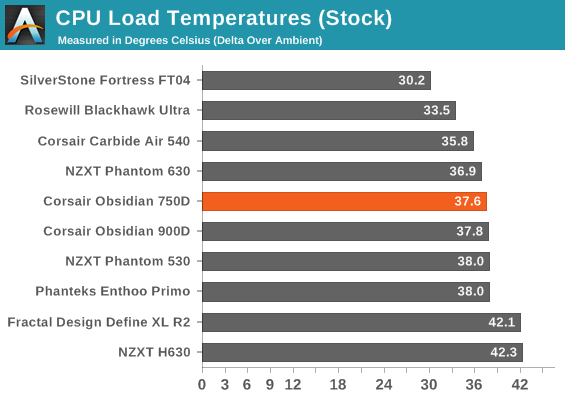

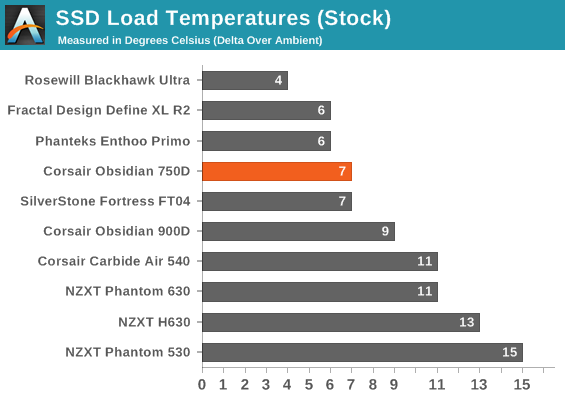
Stock air cooling performance is at least pretty respectable and competitive. It's not the monster that, say, the Air 540 is (let alone the SilverStone Fortress FT04), but it holds its own.
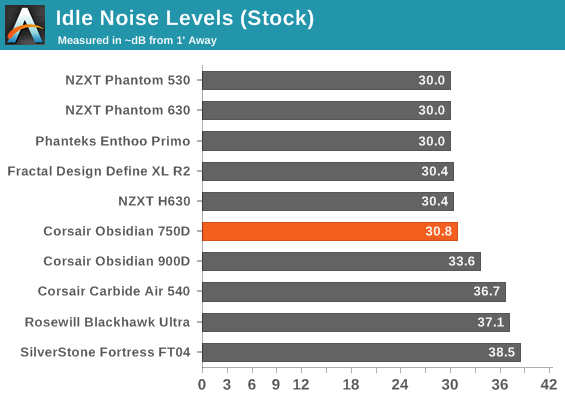
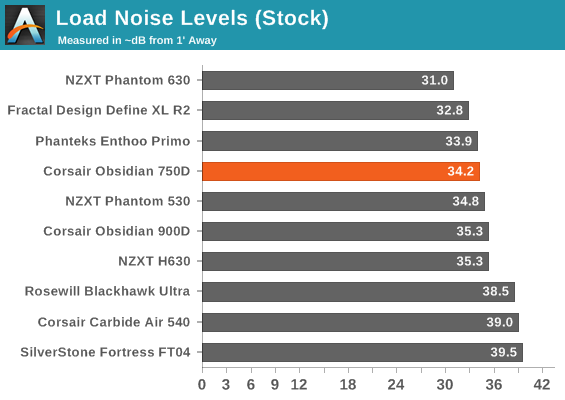
For at least stock testing, the Obsidian 750D is able to hit that middle ground pretty nicely. Load noise is better than a lot of the competing cases; SilverStone's FT04 has worlds better thermals on the CPU, but it's much louder in the process (though it can be tuned to a more pleasing balance of noise and performance depending on the end user's taste.)
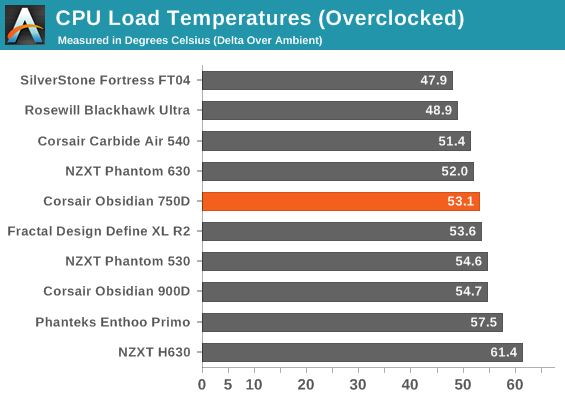
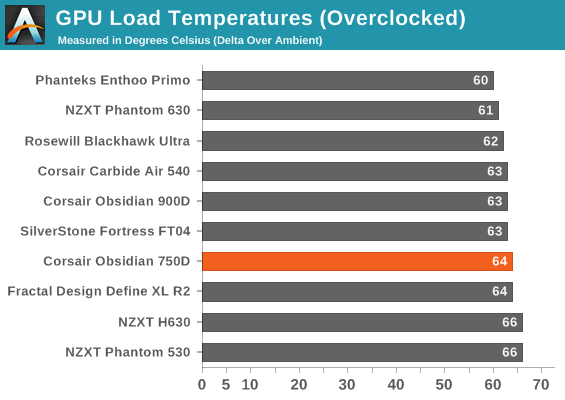
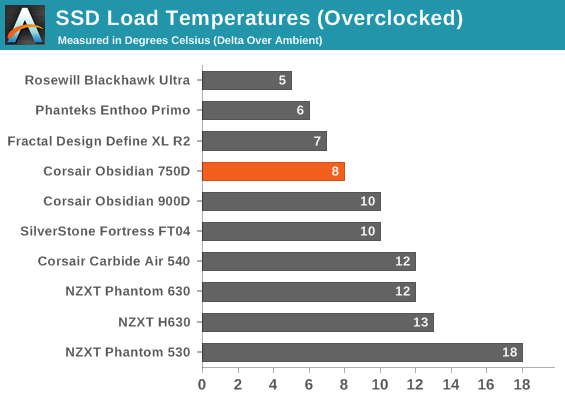
Overclocked thermal performance is surprisingly strong. The 750D isn't leading the pack, but it's posting closer to the top and maybe a degree and a half behind the beefier Air 540.
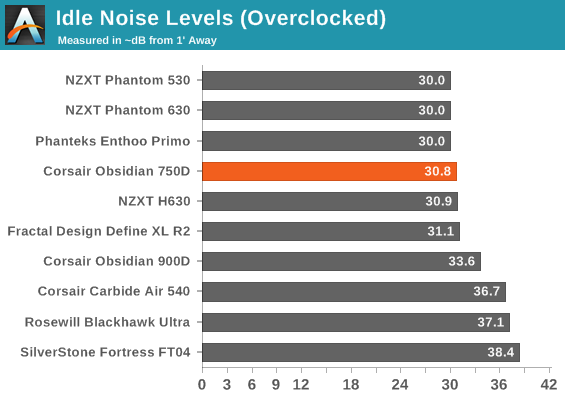

Noise levels prove to be a victory for Corsair, but they're still struggling to beat NZXT's Phantom 630, which runs both quieter and cooler. This is a step in the right direction and the difference between the cases is small enough that you can probably go with whichever you prefer. Corsair really needs to step their game up to compete with NZXT, though; Corsair makes arguably better liquid cooling cases, but NZXT doesn't make you choose.
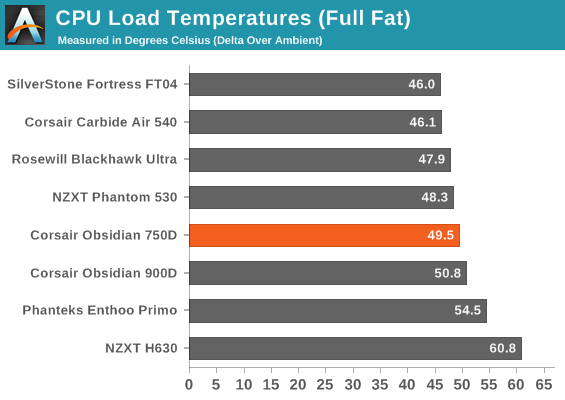
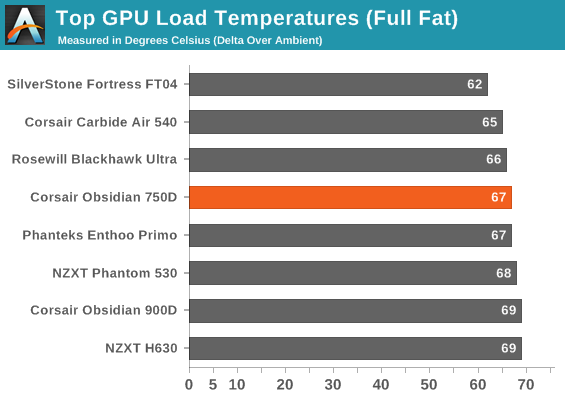
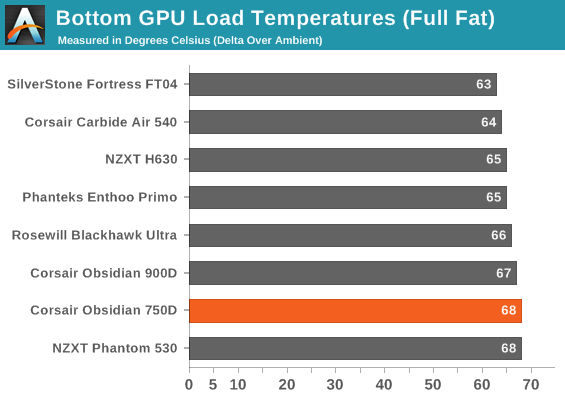
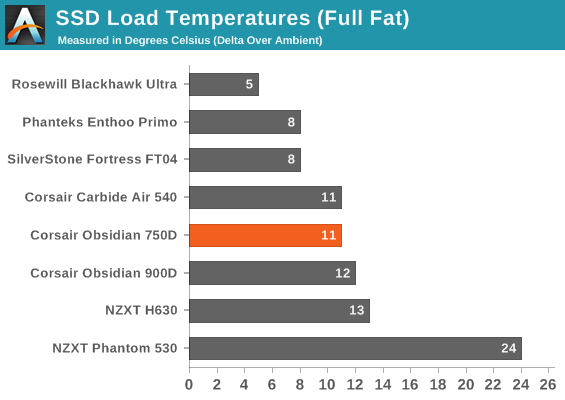
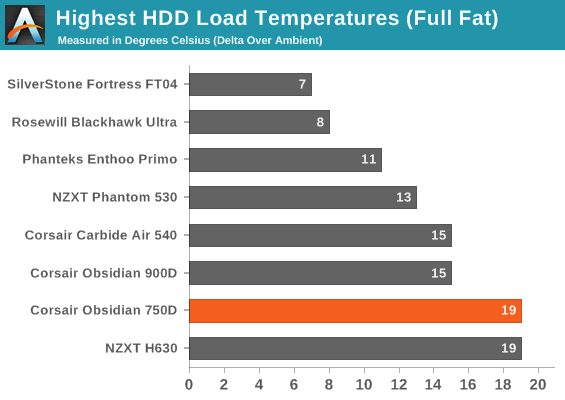
Our full fat testbed unfortunately hits the limits of the Obsidian 750D's stock cooling configuration. Thermals are mostly competitive but measurably weaker than the competition. The traditional ATX layout typically just plain needs more airflow when faced with this much of a thermal load.
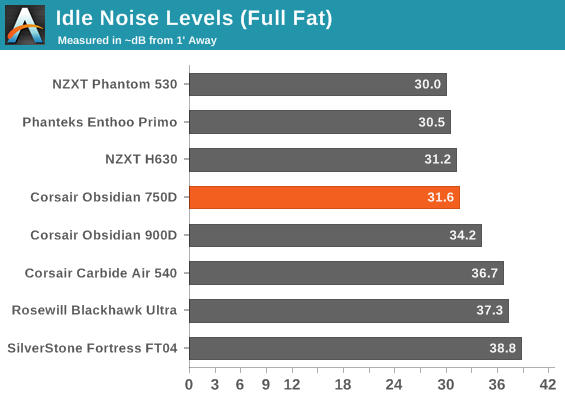
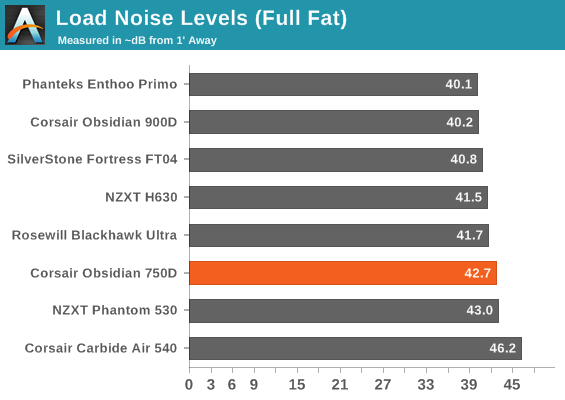
The 750D winds up being one of the louder cases as a result. Corsair's thermal target clearly wasn't something as grueling as this type of system, but this highlights the value of having either PWM fans or a built-in fan controller. Either will allow the case to be more flexible in terms of the systems it can support instead of starting to hit limits.










40 Comments
View All Comments
just4U - Wednesday, September 25, 2013 - link
Totally agree.. and with that said here's my current system http://imageshack.us/a/img545/9060/g45f.jpg and yes it has a window! (Corsair 350D)pdjblum - Tuesday, September 24, 2013 - link
You continue to be dismissive and arrogant by refusing to even acknowledge by constant complaint about not listing the bill of materials in the spec table. Here is the spec table from the review on bit-tech.net that was also published today:Specifications
Dimensions (mm) 235 x 546 x 560 (W x D x H)
Material Steel, plastic
Available colours Black
Weight 9.5kg
Front panel Power, reset, 2 x USB 3, 2 x USB 2, stereo, microphone
Drive bays 3 x external 5.25in, 6 x internal 3.5in/2.5-in, 4 x dedicated 2.5in
Form factor(s) E-ATX, ATX, micro-ATX, mini-ITX
Cooling 2 x 120/140mm front fan mounts (2 x 140mm fans included), 1 x 120/140mm rear fan mount (140mm fan included), 3 x 120/140mm top fan mounts (fan not included), 2 x bottom 120mm fan mounts (fans not included)
CPU cooler clearance 180mm
Maximum graphics card length 460mm (340mm in extreme low slot with storage caddie installed)
Extras Removable dust filters
Too bad you cannot do the same.
jdon - Tuesday, September 24, 2013 - link
And you continue to be arrogant by refusing to even acknowledge that you are a reader, not an editor. Take a powder, and cut Dustin a little slack or ask nicely. We can Google any information we want that isn't here.Too bad you cannot quietly do the same.
pdjblum - Tuesday, September 24, 2013 - link
I have asked nicely numerous times to date, but he has not even responded. The review is not complete without the build materials, and a reader should not have to search outside of the review to find out something as pertinent as this. I would have not been such a big shot and responded to one of my polite comments over the years already.just4U - Wednesday, September 25, 2013 - link
Yes but that certainly doesn't mean he's being arrogant or pig-headed about it. Dustin's pretty damn good about fielding questions/comments about his articles.A5 - Tuesday, September 24, 2013 - link
What is in that list that isn't in the table on page 1? The dust filters?LB-ID - Tuesday, September 24, 2013 - link
Dustin, whatever HAS happened to Antec? They really used to be the market leader in cases, and now they just seem to have whimpered quietly off into the night.HisDivineOrder - Tuesday, September 24, 2013 - link
Can't wait for the inevitable cube-shaped Obsidian case. Hope they go 550D and try to make it silent, but deadly with lots of fan ports. Also, they can toss the window and give me some places for GPU cooling on the side instead.Too many windows of late, too few places for GPU cooling.
Teizo - Tuesday, September 24, 2013 - link
More like 350D's big brotherjust4U - Wednesday, September 25, 2013 - link
Yep